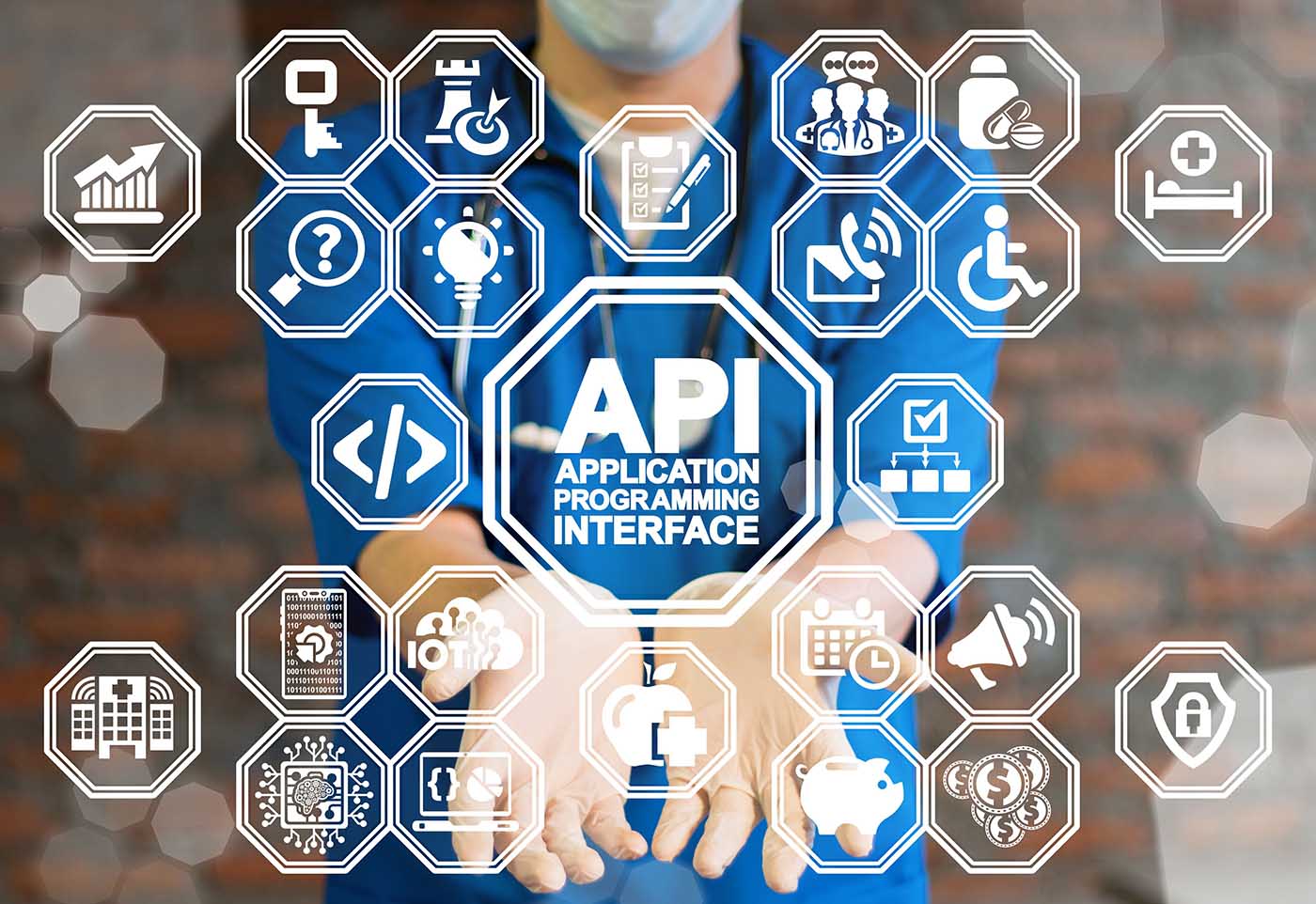The Key to Modernizing Legacy IT Infrastructure: API Management
As integration professionals know, digital transformation and APIs go hand-in-hand – or should. Jitterbit CTO Manoj Chaudhary shares with IDN exactly where and how APIs can empower all stakeholders across any digital transformation project, especially those that deal with legacy assets.
by Manoj Chaudhary, CTO & Sr VP of Engineering of Jitterbit
Tags: APIs, APIM, iPaaS, innovation, integration, Jitterbit, legacy, modernization,

CTO & Sr VP of Engineering

"The beauty of APIs is they can create a network that shields the legacy infrastructure. In turn, this can fuel near-frictionless innovation."
 Integration Powers Digital Transformation for APIs, Apps, Data & Cloud
Integration Powers Digital Transformation for APIs, Apps, Data & CloudFor anyone wondering why the much-coveted “digital transformation” is top-of-mind for so many organizations, the answer is fairly straightforward. In today’s world, there is often a significant gap between existing-but-aging IT infrastructure and the current method of building and deploying applications.
For many businesses, this gap is creating an urgent need to play catch-up.
It’s a common refrain:
Our business runs on mainframe systems from the late ‘80s or early ‘90s, sprinkled with a selection of homegrown applications built to address our specific business needs.
Add in a decade (or more) of the “we’ve always done it this way” mentality, and you soon start to realize why true digital transformation is a necessity for so many businesses across industries.
Technology and design patterns are clearly evolving at an ultra-high pace. In the span of just a few years, microservices-in-the-cloud has now become the preferred way to build and deploy apps. This trend, however, created a new conundrum.
To extract necessary data from all of these apps and services, users needed to go to multiple data sources directly. That because for many legacy assets, there weren’t clean APIs or interfaces for developers to build applications.
Enter the API Revolution
To get a better appreciation for this difficulty, let’s take a real example – and look at it from both the business and IT point of view.
Say you’re an insurance company that wants to build an app for end customers to use either on their mobile device or desktop/laptop browser. The application would need to include all of the functionality insurance consumers expect, such as the ability to download documents related to premiums and a transparent view of all billing assets.
The problem is, all of this data comes from multiple sources or systems. If your IT infrastructure is dated, building the mobile app requires you to go to each of these data sources, a laborious process that takes away the ability to maintain, scale and move at high agility.
The reality is that today’s modern apps require an infrastructure built on an API interface connected to existing apps and data stores. Doing this correctly essentially “hides” the complexity of legacy infrastructures and allows organizations to build new apps with clean interfaces. This creates an ability to build, maintain and scale modern apps at a fast pace with high agility, achieving a digitally transformed infrastructure without the cost of completely ripping and replacing legacy systems (and the investment that comes along with it).
The New API-First Mentality of Developers
Today’s app developers now think API-first. They don't even want to know what underlying infrastructure they may be dealing with because it only hinders productivity. They don’t want to ask how many apps or services need to be exposed to create a seamless user experience, because the answer is probably “a lot.”
The beauty of APIs is they can combine to create a network that shields the legacy infrastructure. In turn, this can fuel many types of near-frictionless innovation.
At a high level, organizations can drive their transformation strategy using APIs to hide the monolithic, homegrown, and complex systems they’ve had in place for years. Even better, a network of APIs offers a clean interface that each developer can use without worrying about the business logic specific to those systems.
Regardless of the organization or industry, the critical business need — in this case — is to unlock the data sitting on existing infrastructures to enable and access so the data can be delivered precisely when needed by these apps.
The most attractive part for most businesses? API management using integration platforms as a service [iPaaS] and API Management (APIM) doesn’t require millions of dollars or hoards developers.

Almost Anybody Can Integrate APIs (Yes, Really)
Not every organization has access to top-level dev teams. But APIM comes to the rescue here as well.
Another good thing about modern API management is effective integration can be accomplished by novice citizen developers with little or no experience. One strategy that can be used to drive enterprise modernization through API integration is to separate the stakeholders into personas:
Designers. These are the people who create integrations. They're often technical in nature and understand the endpoints their organization needs integrations for. Modern low-code and no-code tools allow them to build integrations by simply dragging and dropping into the workflow they want to create. If they do happen to be more sophisticated, they can use full-blown coding tools as well.
Developers. These are the folks responsible for building and publishing APIs. As you would expect, developers are more well-versed in the coding that happens behind the scenes while they utilize API management platforms.
Configurators. These are often the less technical business analyst types. They don't want to worry about the underlying technology, they simply have a business problem that needs to be solved. For these types of users, there are solution exchanges that allow them to browse pre-built integrations that fit their business needs and implement them with relative ease.
Administrators. These are the operators who generally manage integrations and infrastructure, including policies for who has access to which data. The key is giving users choices of tools that fit their needs and expertise best, and ideally cloud-based tools that don't have an on-premises footprint.
What the Power of iPaaS and APIs Look Like in Practice
To illustrate the power of PaaS + APIM, let me highlight the case of a manufacturer of electronics test and measurement equipment and software.
This company has more than 12,000 employees serving customers in over 100 countries. Their main problem was it wanted to gain full visibility into the customer journey, from sales all the way to master data management.
To achieve this. the company had a handful of challenges in front of it, including
- integrating on-premises apps with cloud apps,
- difficulty with deployment and support, and
- limited visibility into transactions.
Making matters more complicated, each app and service it used had its own interface and technology, making it difficult to support with multiple teams and access levels. At the end of the day, data is “owned” by the end customer, so visibility is difficult when that data moves across various systems.
The list of apps and services the company uses across the customer journey is fairly extensive, but not uncommon by today's standards. For example, it uses Oracle for orders and finance (among other functions), Adobe Experience Manager for sales, FedEx for shipping, Salesforce for service, Jira for support and Eloqua for marketing automation. And there were other systems as well.
This complex setup not only causes problems on the business side but also creates a clunky and time-consuming experience for the customer. It's not difficult to imagine it taking multiple teams to pull off a single customer journey, with each of these teams having limited visibility into transactions.
But, by providing APIs for all of the systems it utilizes, the company now has real-time access to all data, reduced time to build and deploy apps, and a full understanding of the complete customer journey.
This shows the ability for a wide range of enterprise IT teams to leverage the APIs even with older systems which lack APIs or use custom interfaces.
In these cases, customers can use modern approaches to connect and integrate (send and receive data) with these legacy/older systems using Low-code/No-code iPaaS systems and then make these integrations available as APIs using Low-code/No-Code APIM. By doing this customers can have APIs build on top of the legacy system using Low-Code/No-Code iPaaS and APIM.
So, in the end, organizations that aspire for digital transformation should not be intimidated by their belief they lack the budget or resources necessary to modernize their vast legacy resources. As we’ve seen, digital transformation doesn’t have to mean completely overhauling legacy infrastructures.
Modern API management and integration has matured to a point where all types of businesses can maximize the value of their existing systems – without tons of investment, writing complex code or doing risky migration.
In 2021, API and modern integration is making it much easier to reach the ultimate goal of creating better experiences for both employees and customers – and most importantly, boosting the business’ bottom line.
Manoj Chaudhary is CTO and senior vice president of engineering at Jitterbit. He leads the company’s technical side of product strategy as well as technology development and operations. Manoj previously served as director of engineering at Cast Iron Systems, a leading integration firm acquired by IBM.
Related:
- Tray Advantage Program To Speed, Simplify AI-Powered Automation for Enterprises
- Removing Barriers to Business by Enabling Agility & Control with Ecosystem Integration
- 98% of Enterprises Struggle To Maintain, Rebuild Integrations for Key Business Apps
- ThreatX Adds API Visibility, Protection Capabilities To Defend Against Real-Time Attacks
- Visibility and Transparency are Climbing the List of C-Suite Priorities in 2022
All rights reserved © 2024 Enterprise Integration News, Inc.


